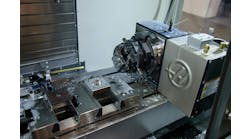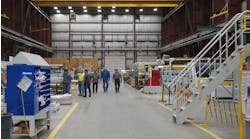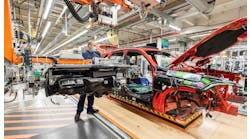Author: Beth Parkinson, Market Development Director, The Connected Enterprise, Rockwell Automation
Digital transformation is a journey, not a destination. Every organization navigates this passage in different ways, and in varying timeframes.
Some companies have raced ahead, collecting data from smart devices embedded in their plants’ equipment to monitor and improve operations via better quality, higher production speeds and reduced energy consumption.
They’re starting to create digital twins of their critical assets and model their processes virtually to proactively develop solutions that support their operations from design and start-up through operations and maintenance.
Other firms have gone even further, delivering real-time insights to executives that allow for asset optimization and strategic realignments of plant portfolios for maximum profitability.
Yet many companies — perhaps yours — are only getting started.
This is good news: significant opportunities await, as long as you start now.
Even better, digital transformation doesn’t have to be an overwhelming new initiative; in fact, it usually migrates along a problem-solving execution model, with a virtual twist:
- Firefighting: What information does management need to fix a piece of equipment or failed production line?
- Problem resolution: What data can staff use to schedule predictive maintenance, and prevent problem recurrence?
- Continuous improvement: Which insights can be leveraged to deliver process innovations, setting new benchmarks for production performance?
Many companies stop at the first step — digital firefighting — because it offers quick increases in stability and productivity without broader change.
Unfortunately, these firms miss out on even bigger gains made possible by the free flow of contextual, flexible information from production devices to the enterprise.
This stream of insights can be leveraged by scalable analytics to improve day-to-day decision-making, develop improved processes, and innovate new business models.
As your company travels along this path to digital transformation, strategic milestones (in the form of questions) will appear:
- Do we have controls and sensors that can deliver reliable data?
- Is our network infrastructure capable of securely moving data to those who need it?
- Do we have productions systems (e.g., MES) to leverage data to improve performance?
- Do we have enterprise systems that accept plant data for business analytics?
- Do we have the talent to deploy data for deeper insights and improved decision-making?
The key to successful digital transformation is not where you start, but where you go.
Fortunately, in the years since the emergence of the “Industrial Internet of Things,” as well as “Smart Manufacturing,” “Industrie 4.0,” etc., the journey has gotten much easier thanks to technologies and tools that put intelligence into facilities both old and new.
Where is your company on the road to digital transformation?



